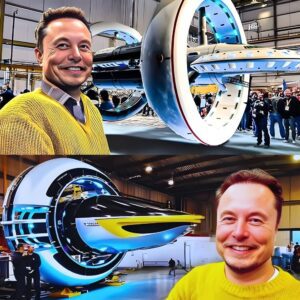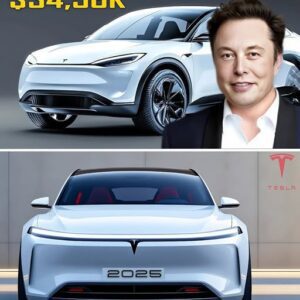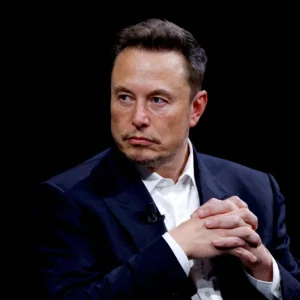In a revolutionary move that could transform the aerospace industry, Elo Musk has reportedly finalized the acquisition of Boeing. The above deal has set the stage for a radical shift in the aerospace innovation landscape, effectively consolidating the industry under Musk’s expanding tech empire.

The Acquisition
Boeing, an aerospace corporation and one of the largest defense companies in the world, has found a competitor to Musk’s SpaceX in the race to dominate commercial space travel and aerospace engineering. Musk’s acquisition comes after months of speculation about his next big project. The announcement was made via Musk’s Twitter, where he stated, “Boeing’s legacy of excellence will merge with SpaceX’s vision for the future. “Together, we will redefine the boundaries of what is possible in the aerospace industry.”
Implications for the information industry
The merger could end decades of fierce competition between Boeing and SpaceX, creating a new powerhouse in the aerospace industry. Key implications include:
Commercial space travel : Combining Boeing’s extensive infrastructure and decades of experience with SpaceX’s cutting-edge technology could accelerate the development of affordable space travel for civilians.Defense sector dominance : With Boeing’s established contracts with governments around the world, a Musk acquisition could give it unprecedented influence in the defense sector, merging military applications with SpaceX’s advanced technologies.Revolutionizing air travel : Musk has gone so far as to integrate SpaceX innovations into Boeing’s commercial airplane operations, which could lead to advancements in supersopic and even hypersopic air travel.
Reaction from competitors and regulators

The deal has caused a stir in the aerospace community. Competitors such as Lockheed Martin and Northrop Grumma have expressed their disagreement with the monopolistic potential of the acquisition. Regulatory bodies such as the US Department of Justice and the Federal Aviation Administration (FAA) are expected to scrutinize the deal to ensure it complies with antitrust laws.
Meanwhile, industry experts have weighed in on the possibility of a merger, with some praising the merger’s innovation potential while others warn of the risks associated with decreased competition. “This could lead to unprecedented advancements in the aerospace sector, but we need to ensure that the industry remains competitive and diverse,” said aerospace analyst Dr. Karepin Alvarez.
Public response
Social media has erupted in reactions to the news. Musk’s supporters see this as a visionary move that could propel humanity into a multi-planetary future. Critics, however, are on board with the centralization of power and the potential marginalization of smaller aerospace companies.
The road ahead
While the acquisition represents a momentous achievement for Musk, it also raises complex questions about the future of the aerospace industry. Will this consolidation spur previous advances or create an industrial monopoly that stifles competition? Only time will tell.
For now, Musk’s latest film reaffirms his ability to defy forms and push the boundaries of what is possible, leaving the world eagerly awaiting what comes next on his ambitious journey to shape the future of humanity.
Bill Gates, the visionary co-founder of Microsoft, has long been known for his transformative investments in technology. However, his latest focus on robotics in healthcare is set to change the face of medicine forever. Gates has heavily invested in medical robotics, particularly in areas like surgical robots and patient-assisting devices, to enhance the quality of care and improve patient outcomes. His commitment to integrating technology with healthcare will redefine the future of medicine.
The Rise of Surgical Robots: Precision and Accuracy in the Operating Room
One of the most groundbreaking investments made by Bill Gates in the field of healthcare robotics is in surgical robots. These advanced robots are designed to assist surgeons in performing delicate and precise procedures. Unlike traditional methods, surgical robots allow for more accurate incisions, reduced trauma, and faster recovery times for patients.
With robot-assisted surgeries, doctors can perform operations with more precision and fewer complications, making surgeries safer for patients. Gates’ backing of these technologies shows his commitment to pushing the boundaries of healthcare innovation. By providing funding and support to robotics companies, Gates is helping to make these life-saving tools accessible to hospitals and healthcare facilities around the world. This robotic revolution is giving surgeons the ability to perform more complex procedures with greater success rates, ensuring better patient outcomes.

Enhancing Patient Care: Assistive Robots for Elderly and Disabled Individuals
Another area where Gates is making a significant impact is in patient-assisting robots. As the global population ages and the number of individuals with disabilities grows, the demand for assistive technologies is higher than ever. Patient-care robots can help with everything from mobility assistance to personal care, enabling elderly and disabled individuals to live more independently and with greater dignity.
These robots can assist with tasks such as helping patients get out of bed, preparing meals, and even monitoring vital signs. For those who suffer from chronic conditions, robotic systems offer a level of care that might not have been previously possible, providing a more efficient and personalized approach to managing health at home. Gates is also investing in developing telehealth robots that enable remote consultations for patients in underserved areas. This technological leap will bring high-quality care to the most remote corners of the world.

AI-Driven Healthcare: How Bill Gates is Supporting the Future of Medical Robotics
Bill Gates’ investment in robotic healthcare doesn’t stop at physical robots. His support also extends to the integration of artificial intelligence (AI) in healthcare. AI-powered robots can analyze vast amounts of medical data in real-time, offering insights that can help doctors make better, faster decisions. This technology is already being used in some of the most cutting-edge hospitals and clinics.
Elon Musk, the tech visionary behind Tesla and SpaceX, has taken his innovative genius to the kitchen with the introduction of a $5,000 cooking robot. This revolutionary device, designed to prepare gourmet meals with unmatched precision and flavor, has stunned both tech enthusiasts and culinary experts worldwide.

A Game-Changer in the Kitchen
The cooking robot, touted as a blend of AI technology and cutting-edge robotics, promises to bring professional-quality cooking to households. Equipped with advanced sensors, precise temperature controls, and a vast library of recipes, the robot can prepare dishes that rival those of top chefs.
“Elon Musk has done it again,” said one early user. “This robot isn’t just a gadget; it’s a culinary masterpiece. The dishes are not only delicious but also perfectly executed every time.”
Features That Wow the World
Precision Cooking: The robot can measure ingredients down to the gram, ensuring perfect results every time.
AI-Driven Recipe Selection: With its vast database, the robot can cater to personal tastes, dietary preferences, and even regional cuisines.
Self-Cleaning System: After cooking, the robot cleans itself, saving users time and effort.
Customizable Gourmet Options: From soufflés to sushi, the robot can create a wide variety of dishes with ease.
Chef-Quality Meals at Home
What sets this cooking robot apart is its ability to replicate the techniques of professional chefs. Using AI-driven learning, the device mimics everything from knife skills to sautéing methods, delivering restaurant-quality meals in the comfort of your home.
For many, the idea of a machine outperforming human chefs seemed far-fetched—until now. Renowned culinary critics who tested the robot admitted they were blown away by its precision and flavor execution.
Mixed Reactions from the Culinary World
While the tech world has embraced this innovation, reactions in the culinary community have been mixed. Some chefs see the robot as a helpful tool for home cooks, while others view it as a potential disruptor to the profession.

“Elon Musk has created something incredible,” said one chef. “But can it capture the soul of cooking, the artistry? That remains to be seen.”
A Revolutionary Price Point
Priced at $5,000, the cooking robot is considered affordable for the level of innovation it offers. With its self-cleaning feature and ability to handle complex recipes, many believe the device will save both time and money in the long run, making it an appealing investment for food lovers.
Social Media Frenzy
The launch has sparked a frenzy on social media, with users sharing videos of the robot in action. “This is the future of cooking!” one tweet exclaimed. Another user wrote, “If Elon Musk’s robot can cook better than me, I’m sold!”
Videos showcasing the robot preparing intricate dishes, such as crème brûlée and perfectly grilled steak, have gone viral, further fueling the excitement.
What’s Next for Musk’s Culinary Revolution?
With the success of this $5,000 cooking robot, many wonder what’s next for Elon Musk in the culinary tech space. Will there be upgrades? A version for commercial kitchens? Or perhaps even a robot that can host dinner parties?
Musk has hinted at continuous improvements, teasing the idea of integrating Starlink connectivity for remote updates and AI advancements.

The $5,000 cooking robot backed by Elon Musk has captured the imagination of the world. By merging culinary arts with advanced technology, Musk has once again disrupted an industry, making professional-quality cooking accessible to all.
As the world adjusts to this groundbreaking innovation, one thing is clear: with this cooking robot, the future of dining will never be the same. Whether you’re a foodie or a tech enthusiast, this invention is sure to leave you amazed—and well-fed.





